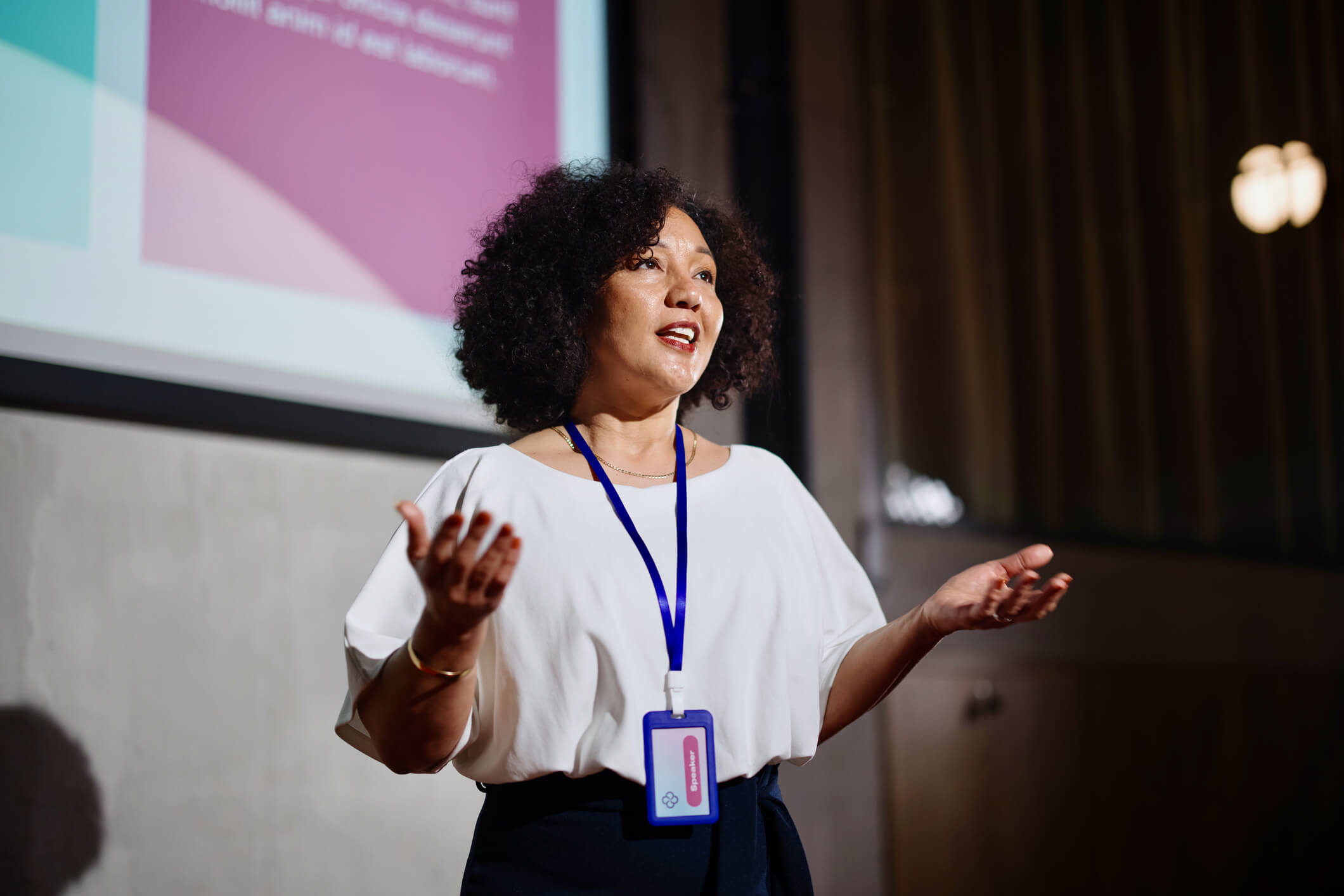We Need Women's Voices
The leadership of women in their homes, workplaces, and communities has long paved the way for social movements – from women’s suffrage to civil rights to the movement for Black lives. We need women’s voices to drive growth and change throughout society.
Storytelling can be a tool to challenge systemic barriers that have historically limited women’s full participation in community and political decision-making processes. 51% of the total population of New York state is female. However, women are underrepresented in New York state government: as of 2021, only 18 out of 63 New York State Senators (28%) are women, and in the 150-member New York State Assembly 33% are women.
From our neighborhoods to the legislature, women’s voices are critical in civic engagement.
How to Create Your Story
Step 1: What do I care about?
- Respond to this question by recording your thoughts in a journal, voice note, or video.
- Take this as an opportunity to explore something you feel passionate about or a problem you would like to solve.
- What you express will clarify the main idea of the subject you want to discuss.
Step 2: Why do I care about this subject, and why should someone else care?
- Your response to this question will help you define your personal relationship to the subject you want to discuss and encourage you to think about how to connect with your audience.
- You may have direct lived experience, or you may be an ally who wants to advocate for an issue.
- Consider how you would adapt your message to reach people who are familiar with the subject and those who would be unfamiliar.
Develop Your Story
Step 3: Apply structure to your story by having a clear beginning, middle, and end.
The beginning is where to introduce the subject you wish to discuss (What do I care about?). This is an opportunity to give a brief overview of your personal relationship to the topic and connect with your audience (Why do I care, and why should someone else?). Here is where you offer the main idea of your story.
The middle is where you provide more details to support the main idea of your story. This section may include additional anecdotes, data, metrics, and quotes that strengthen your narrative.
The end is where you summarize everything you covered. Remind your audience of your main idea and propose a solution. If you are uncertain about a specific solution, provide a “call to action,” or suggest next steps for audiences to take to support the subject you discussed.
Step 4: Revise for Clarity
Consider the format and platform where you will be sharing your story. Whether a 5-minute testimony or a letter to a legislator, it is important that your message is clear.
Focus on the details that your audience needs to know. You may need to edit your story by providing more context or trim down information in other areas.
Rehearse your speech or share your written story with people you trust for feedback, and modify it as needed.
Share Your Story with the World!
Congratulations!
You created a story inspired by your lived experience that can impact change in your community. Your voice is vital for civic engagement, and the narratives you share will help our society grow.
Following is an example of civic storytelling in action by Reda Taleb.
Ideas to Keep in Mind
IDEAS TO KEEP IN MIND
Here are some key concepts to remember as your craft, refine, and share your story.
- Lived Experience: The knowledge and expertise gained through direct personal engagement with everyday events and topics rather than through representations constructed by other people.
- Audience: The individual or group of people you intend your message to reach. Examples: community members, elected officials, community boards, etc.
- Main Idea: Your thesis or the primary topic of your story.
- Call to Action: Specific guidelines or next steps given to your audience to address the topics presented in your story.
Take Action
STORYTELLING IN ACTION
Share Your Story
Take what you shared in the workshop, and share it on social media! Be sure to use the hashtag #speakupandshine and tag @civicmatters for the chance to be featured on our Instagram page.
Find Out Who Represents You and Contact Your Representatives
Plug in your zip code to learn about your representatives and districts. Let your representatives know about what is going on in your community and the changes you would like to see. Make calls as part of a phone bank for a political campaign, to share resources, or to get out the vote (scripts are usually provided) with opportunities through places like Mobilize.us and New York Cares.
Familiarize yourself with organizations supporting causes you care about
We Are New York Values is a useful directory of organizations you can tap into!
Give Spoken or Written Testimony
See this guide created by the Citizen Advocacy Center for how to prepare an effective testimony.
Sources
This guide was developed and written in partnership with Jasmine Wilson.
“A Blueprint for Women’s Civic Engagement in New York City: Towards a More Just and Equitable Democracy.” Women Creating Change. https://wccny.org/wp-content/uploads/2021/07/WCC-Blueprint_single-pages_July-29_FINAL.pdf

 Make the Switch to our new mailing list!
Make the Switch to our new mailing list!